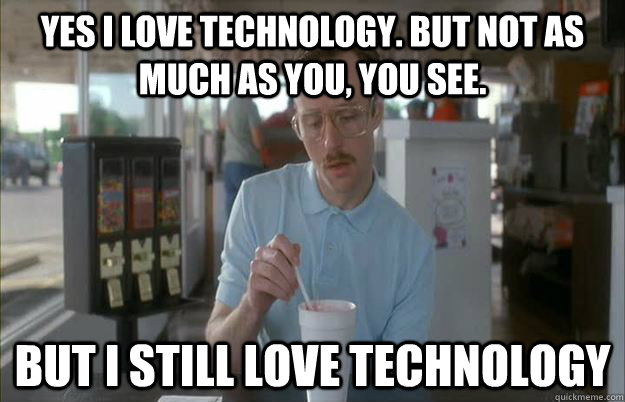I have
recently had the enjoyment of going to the movie theaters to view a film on big
screen. I decided to watch the movie Big Hero 6, an animated action adventure
film. Keep in mind, I have not been to a movie theater for a few months
but one thing in the movie theater took me by surprise.
Prior to not only to the feature film but to the coming soon movie
trailers, there are always commercials upon commercials playing for the audience as they wait.
They include either the theaters own commercials and interviews, as well as
partnering or sponsoring companies playing their commercials. This of course if
not new for me. What differed was that they have now created interactive
commercials! What is an interactive commercial? No longer will the audience
simply view and absorb the information from a commercial but can now be a part
of it. Here is an example of an interactive commercial for Coca Cola, which gets the audience to compete against each other CLICK HERE.
Another interesting example to explain how this can be used is this video. It has the audience decide what happens on screen.
The
example I experience firsthand was an ad for Koodo Mobile, a Canadian mobile
company. During their commercial they asked the audience to get out their phone
to play along. They were told they can shoot hockey pucks at the Koodo mascot
who was acting as a goalie. If they players got their puck past the goalie into
the net, they would accumulate points. Throughout the few seconds of mayhem,
the screen also flashes the names of those who earn points as they occur. After
the timer is up, the individuals with highest points are shown on a board. This type of ad not only got the attention of most of the
audience but created an energetic excited environment for the whole theater.
I was sitting further back so the whole time I could see
individuals on their phones playing along or interacting with the other commercials. The next commercial was for Cineplex, the theater we were
watching the film at. It required participants to guess answers correctly for a
question about films. It asked which of the motion pictures listed were based
on car racing. Some of the options were Turbo, Cars, Ratatouille and so on. So
for the movie lovers who have seen many films, this question would be a no
brainer, while for others it is more challenging. For that reason, Cineplex
would slowly eliminate wrong answers as the timer came to an end to help the
audience with their answers. Here is a video of the application the audience used to interact with the big screen.
It is an interesting concept since in many instances we are
usually told to not interact on our phones at the movie theater. What companies have now realized is they must utilize
the technologies to gain out attention and use it for their own advantage. For
the interactive commercial, I observed much more of the audience paying
attention to what was on the big screen rather than the audience playing on their phones while they wait for the film to start. I remember in the past I would also pay attention to my phone rather than watch the
commercials, since they were of no interest to me at the time. There was an application users were informed to download prior to the interactive session,
which I will
have ready to play along next time.
have ready to play along next time.
The whole notion of interactive commercials reminded me of a
concept I learnt in class about hierarchies of effect. Hierarchies of effect
are part of the ABC model of Attitude for consumer behavior. ABC model refers
to the affect (A) or the way people feel about an attitude object, the behavior
(B) which involves the contagion or intentions of people to do something with an
attitude object and the cognition (C) peoples beliefs about an attitude object (Solomon 2014) . The hierarchies of
effect refer to the level of relative impact these three components have. There
is high-involvement, Zajonc’s model and low-involvement. The low-involvement is
the level which is relevant and will be discussed further.
Low-involvement refers to consumers collecting only minimal
information before acting and only shows emotional response after the product
has been consumed (Solomon 2014). This may include consumers who don’t have a
strong preference about the object or similar objects to begin with. With
respect to the Koodo example above, low involvement would be someone who has a
phone but is not dedicated to their current phone contract or service provider.
Perhaps they would see the interactive commercial and switch over to Koodo
because they were impressed by their inattentiveness. Only after they switch
providers they would them have positive or negative feedback with respect to
how the product or service is working for them. For instance, let’s pretend
someone has Koodo service then goes to the movie theater to see the film.
They then see the interactive Koodo advertisment and play along. This may reinforce
positive notions that they made the correct choice in investing in Koodo’s
service. To summarize low-involvement, it is attitude were we could say “Try
it, you’ll like it.”
Therefore all in all interactive commercial are definitely an
improvement to the waiting time at movie theaters and although I could not
observe the result of such advertisements, I would say that this innovative
marketing definitely has an impact on consumers and can reinforce how we
perceive companies. Technology is affecting consumer behavior and will continue to do so as long as technology is around.
Solomon, White, Dalh.
"Consumer Behaviour ." 189. Pearson, 2014.
This topic (Hierarchies of Effect and the ABC Model) is part of Chapter 7 - Attitudes.
This topic (Hierarchies of Effect and the ABC Model) is part of Chapter 7 - Attitudes.






No comments:
Post a Comment